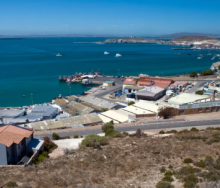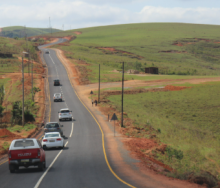Tanzania is now ranked fourth highest in terms of overall attractiveness for trade in Africa.
Its leap in the Standard Bank Africa Trade Barometer rankings was boosted by the country’s substantial investments in infrastructure and better access to finance, enabling businesses to engage more actively in cross-border trade.
On the downside, Ghana experienced a sharp decline, moving from third position to the seventh spot, underscoring the pressures that economy continues to endure.
“Its sharp decline also raises concerns about its ability to maintain trade competitiveness, even as Ghana is one of the most stable and democratic countries in West Africa,” the barometer noted.
Its decline in the trade rankings is mainly due to a worsening macroeconomic environment and falling trade confidence. As economic volatility intensified in Ghana, its ability to facilitate seamless trade came under strain, making it harder for businesses to access foreign currency, most notably USD required to pay for imports and engage in cross-border activities, especially for small and medium-sized enterprises.
Philip Myburgh, Group Head of Trade at Standard Bank Business and Commercial Banking, said as Africa moved towards greater integration under the African Continental Free Trade Area (AfCFTA), the barometer offered critical insights into the opportunities and challenges facing businesses.
“The shifts detailed in the report further reflect changing macroeconomic conditions, infrastructure challenges and access to finance amongst many others, which are all impacting the trade environments of the 10 countries featured,” Myburgh said.
The barometer covers seven broad categories of data that impact Africa’s trade, and upon which the barometer scores each country. These categories include: trade openness, access to finance, macroeconomic stability, infrastructure, foreign trade, governance and economy, as well as traders’ financial behaviour.
Overall, the trade attractiveness ranking reveals a shift in trade standings among the ten African nations it covers, with Tanzania (moving from eight to fourth ranking), Mozambique (four to three), Nigeria (six to five) and Zambia (nine to eight) recording improvements in their positions, while declines were recorded for Ghana (three to seven), Uganda (seven to nine) and Kenya (five to six).
Meanwhile South Africa, Namibia and Angola retained their rankings, at positions one, two and ten, respectively.
The ten countries covered are AfCFTA signatory nations, representing 66% of Africa’s gross domestic product (GDP) and 45% of the continent’s population.
“Overall, the macroeconomic conditions across the countries present a mixed outlook, with relatively sustained growth tempered by ongoing challenges. The estimated real GDP growth rate for 2025 stands at 4.3%, reflecting steady progress despite headwinds,” according to the barometer report.
Positive developments include infrastructure investments, economic diversification efforts, and increased production in sectors like oil, mining, and agriculture. However, high inflation, forecast to reach 9.9% in 2024, remains a pressing concern, driven by currency depreciation and worsened by weather events such as severe droughts in Southern Africa and flooding in East Africa.
According to the report, the path forward will require a focus on prudent economic management, diversified growth strategies, and bolstering resilience against climate risks.
“Given our position as Africa’s largest bank, we understand that reliable trade data is essential for making informed business decisions, particularly in the context of a dynamic and evolving trade environment,” Myburgh said.
Access the report here.













